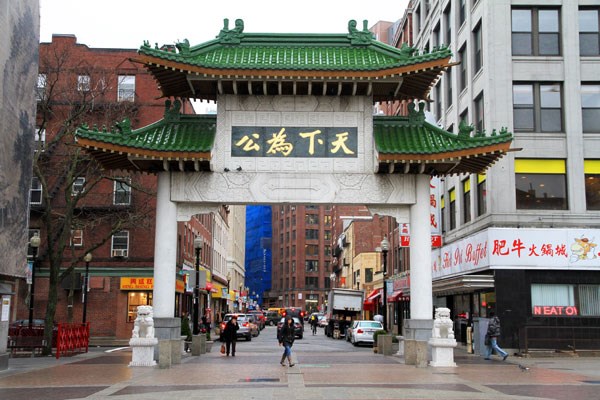Boston Community to Benefit in $450K Grant from NIH

Boston’s Chinatown is home to nearly 6,000 residents, mainly of Chinese descent.
01/26/2015
By Edwin L. Aguirre
Highway pollution, particularly ultrafine particulates from car exhausts, can cause a range of adverse health effects, especially for people with asthma and respiratory and cardiovascular diseases.
Boston’s Chinatown was chosen for the two-year NIH study because of its proximity to major highways and its dense, low-income population of Asian immigrants, especially from China, who are at high risk.
“The project aims to establish a new health communication and literacy program that would facilitate Chinatown residents’ access to complex scientific information about their community’s exposure to traffic-related air pollution,” says UMass Lowell computer science Prof. Georges Grinstein, a principal investigator in the NIH study. “Right now, because of their limitations in English proficiency, educational and economic backgrounds and access to computers, they are likely not learning about air pollution from traditional news sources.”
Grinstein will direct the creation of a map-based computer visualization of particulate pollution across Chinatown. He will use Weave — an open-source, web-based analysis and visualization platform developed at UMass Lowell and in use worldwide — to take data collected by the umbrella organization Community Assessment of Freeway Exposure and Health Study to produce interactive displays of the estimated pollution levels under different weather conditions.
“Menus on the computer visualizations will be both in Chinese and English,” explains Grinstein, who directs the university’s Institute for Visualization and Perception Research.
“The user will be able to point to locations in Chinatown and an indicator will show levels of ultrafine particulates for that location at different times of day. Interactive animations will also demonstrate how residents can lower their pollution exposure by closing their windows when the levels are high, scheduling their walks and outdoor activities when the levels are low, avoiding heavy-traffic areas and installing vent filters and air conditioners,” he says.
Bridging the Generation Gap
The team will partner with the Boston Chinatown Neighborhood Center in training bilingual high-school students, who are already familiar with computer technology, on how to use the Weave visualization tools. UMass Lowell Assoc. Prof. William Mass of Work Environment and his students will lead the training effort.
“These high-school students will then teach adult Chinese immigrants and engage them in interactive demonstrations and conversations about air pollution and its health effects,” says Grinstein.
Because traffic-related particulate pollution is not only invisible and odorless but also toxic, making the environmental threat apparent to ordinary people is critical to influencing their interest in and response to the problem, he says.
“The computer visualization of fine particulate concentrations across a community for presentation to lay people has never been attempted before,” notes Grinstein. “Our method of community-based intergenerational collaborative learning about environmental health through visualization is also a first.”
“A number of Chinatown residents have computers in their homes but many do not,” explains Carolyn Wong of the Institute for Asian American Studies at UMass Boston and the principal investigator in the NIH study. “For now, they can use computers at the neighborhood center.”
Wong adds: “Our teaching approach is currently geared toward group settings — small groups with demonstrations by skilled tutors. The visualization tool is not intended to be used on a frequent home basis by individuals. Rather, it is designed as an educational tool in a group or classroom environment. If we find the visual approach to have good results, we will apply for future grants that could explore enhancements and other applications, such as making some of the features available on mobile devices for individuals to use.”
